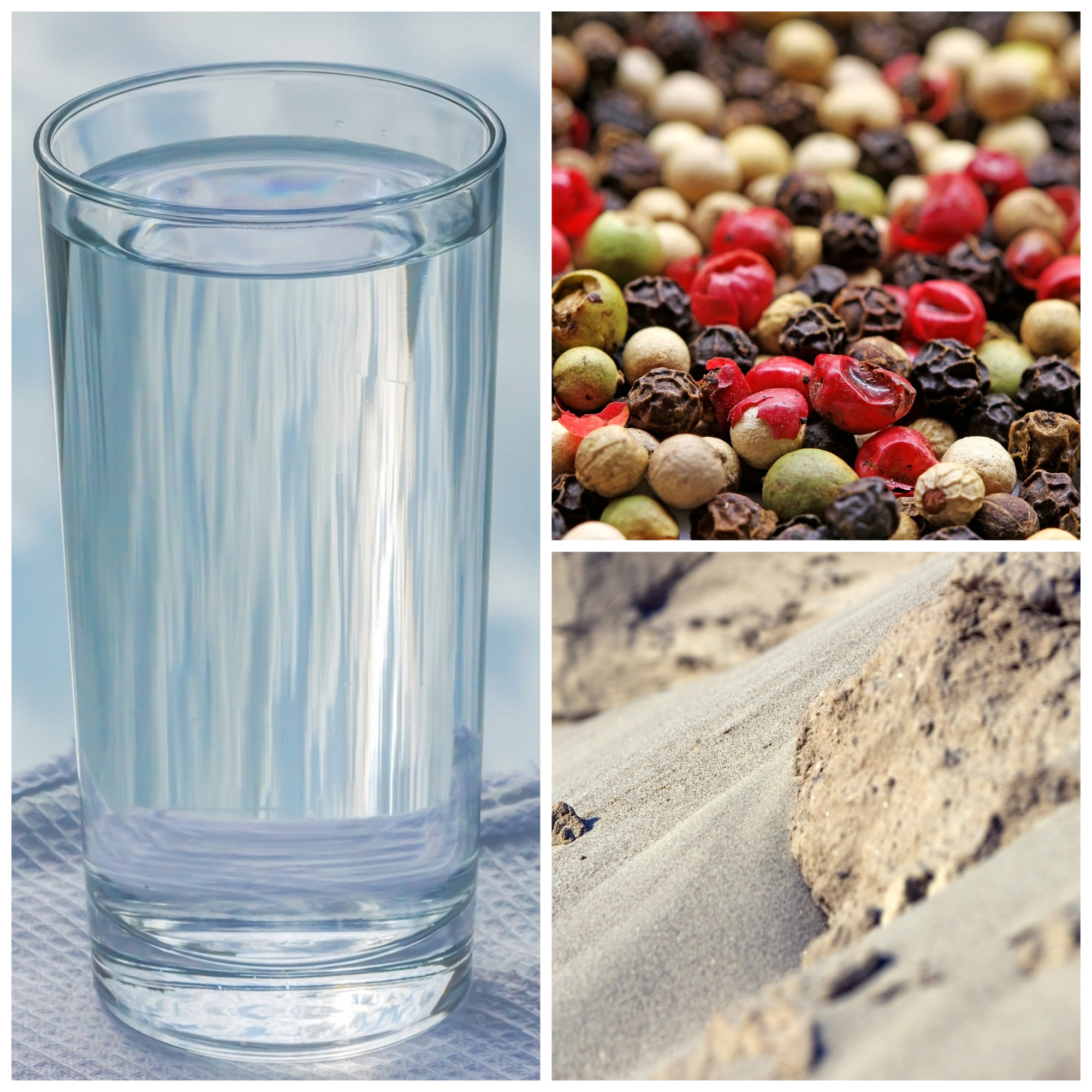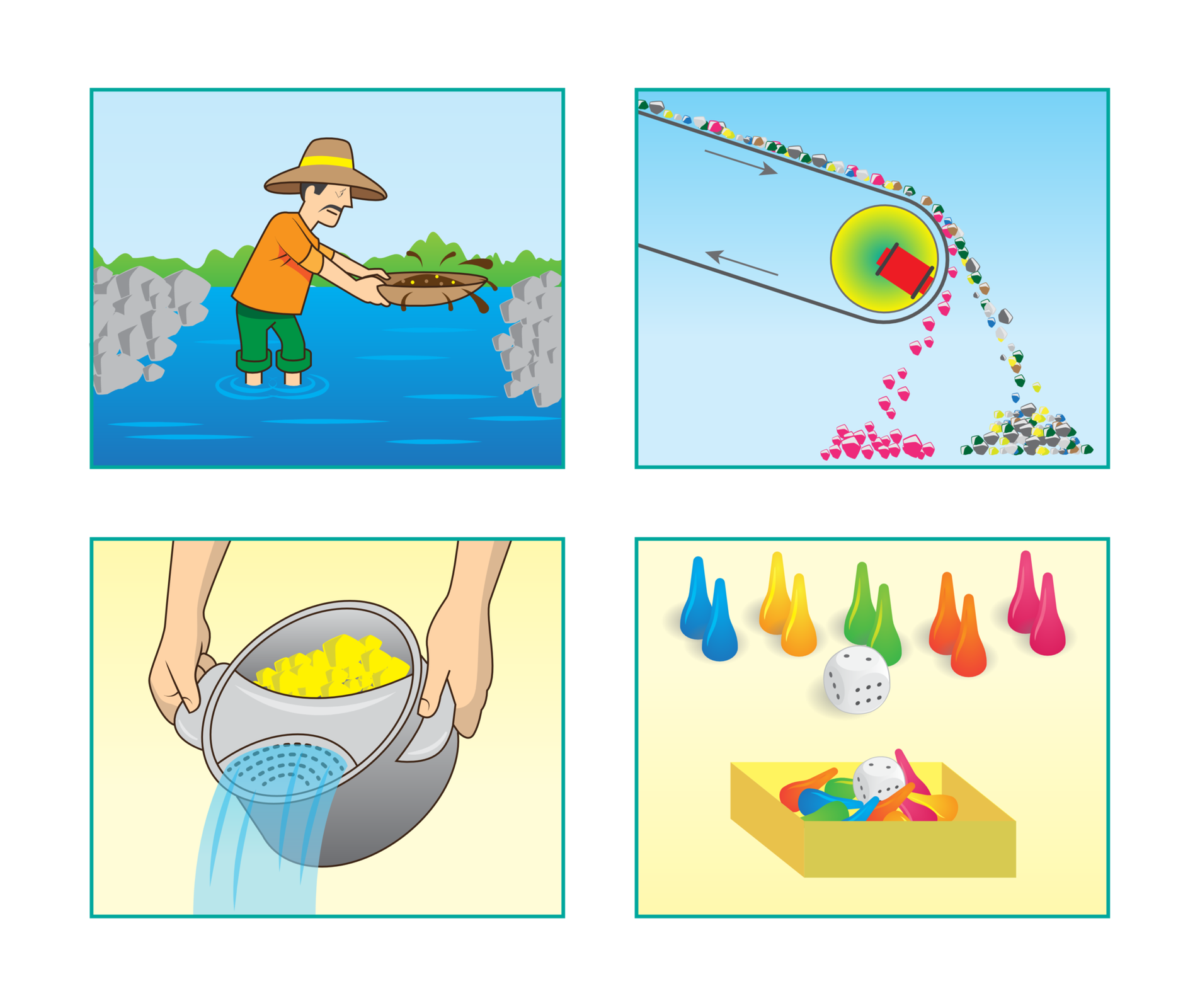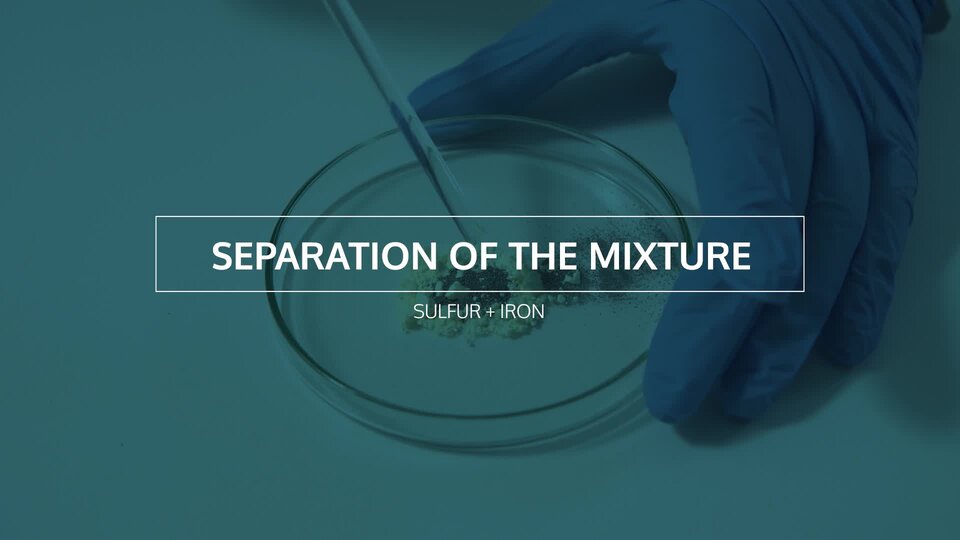How can you separate the mixtures found in everyday life?
what is a substance, a mixture;
which safety rules should be followed in the school chemical laboratory;
what do the terms physical properties and chemical properties mean and how the properties of the substance can be tested;
according to what criteria the mixtures are classified.
what are the methods for separating homogeneous and heterogeneous mixtures;
what laboratory techniques are used to separate mixtures;
indicate the differences between the physical properties of the mixture components that enable its separation;
plan ways of separating mixtures into components (e.g. water and sand, water and common salt, chalk and rock salt, sulphur and iron filings, water and edible oil, water and ink) and perform appropriate activities by themselves;
describe the possibilities of using the methods of separation of mixtures at home and in industry;
use basic terms regarding mixtures and the way to separate them.
Types of mixtures
Arrange the picture and tell what kinds of mixtures are: water with salt, coloured pepper and sand. Recall information on the classification of mixtures and briefly characterize all of them.

Think about known methods for separating the mixtures and write these down here or in the notebook. Which of the physical properties of their components are used in these methods in your opinion?

Methods to separate the mixtures
In order to plan the method of separating the mixture, the analysis of the properties of its components should be performed and differences should be used. Mechanical methods (mechanical separationmechanical separation) allow to separate components forming a heterogeneous mixture. These methods use the differences:
appearance (e.g. manual sorting, using a tweezers or sieve – salt and pepper);
magnetic properties (using magnet – sulphur and iron);
differences in solubility (e.g. in water – chalk and salt, water, oil).
Heterogenous mixtures can be separated using following methods:
filtration (seeping) – solids are retained on the sieve, drain or filter; this process can be observed by straining pasta on a sieve;
sedimentation– gravitating of solid substances to the bottom under the influence of gravity; it is used in sewage treatment plants;
decantation – pouring off the liquid, leaving the sediment behind; it can be observed during draining off potatoes after being boiled or poring off the tea or coffee and leaving the leaves or coffee grounds behind;
Homogenous mixtures can be separated using following methods:
vaporizationvaporization – heating up the liquid mixture and the solid dissolved in it to evaporate the liquid; this process is used in the preparation of jam, while in countries with a warm climate it is the effect of evaporation of sea water and the formation of rock salt deposits;
crystallizationcrystallization – this technique allows the separation of solid crystals from the solution;
distillationdistillation.
Before watching the movie „Separating the mixture of sulphur and iron”, formulate a research question and hypotheses. During the screening, pay attention to how the components of the mixture behave before and after mixing. How it can be used?

Film dostępny na portalu epodreczniki.pl
Nagranie filmowe przedstawia eksperyment rozdzielania mieszanin, separation of the mixture, siarki i żelaza, sulfur and iron. Do eksperymentu potrzebne są, opiłki żelaza, iron filing, szkiełko laboratoryjne, dish, łyżka, spoon, bagietka szklana, stirring rod, magnes, magnet. Na szkiełko laboratoryjne wsypujemy szczyptę sproszkowanej siarki oraz opiłków żelaza, następnie mieszamy substancje szklaną bagietką. Do mieszaniny przysuwamy magnes, opiłki żelaza przywierają do powierzchni magnesu, oddzielając się od mieszaniny.
The heterogeneous mixture can be separated due to the fact that its components have different magnetic properties.
Select true statements.
- Sedimentation is the pouring off the liquid from the sediment.
- An example of an extraction process in a solid-liquid system is the process of brewing tea or coffee.
- Liquid can be separated from the insoluble solid by decantation or filtration.
- After separating the mixture of water and oil in the separating funnel with the tap, the oil is poured into the beaker and the water remains in the separating funnel.
Combine the name of the mixture separation method and its description.
A method of separating mixtures in which the components to be separated divide between two phases, one of which is a stationary phase and the other a mobile phase of the chromatographic system, Formation of the solid in the form of crystals due to, for example, a lowering of the temperature of the mixture formed by dissolving the maximum amount of solid in the liquid, Separation of the solid from the liquid by pouring off the liquid from the sediment, Passing a mixture of solid and liquid through a filter that stops the sediment and passes through the liquid, Isolation of a component or components of mixtures by diffusion to liquid that better dissolve these chemicals, Separation of the mixture of liquids differing in the boiling points by subsequent evaporation and condensation, A solid substance falling to the bottom of the vessel with a density greater than the density of the liquid to which it was poured
| Decantation | |
| Distillation | |
| Filtration | |
| Extraction | |
| Chromatography | |
| Crystallization | |
| Sedimentation |
Summary
The mixtures can be separated using various techniques.
Separation methods depend on the type of mixture and use the properties of its components.
The methods of separating homogeneous mixtures include: solvent evaporation (e.g. water), distillation, crystallization, chromatography.
The methods of separating heterogeneous mixtures include: sedimentation, decantation, filtration, mechanical separation, separatory funnel separation.
Name two examples of mixtures that can be separated using seeping and distillation.
Keywords
Mixture, homogenous mixture, heterogenous mixture, methods of mixtures separation
Glossary
dekantacja – metoda rozdzielania mieszaniny niejednorodnej ciała stałego i cieczy, polega na zlewaniu cieczy znad osadu
destylacja – metoda rozdzielania wieloskładnikowych mieszanin ciekłych różniących się temperaturą wrzenia; polega na przeprowadzeniu w stan pary, a następnie jej skropleniu składników
krystalizacja – polega na wydzieleniu się substancji stałej w postaci kryształów wskutek np. obniżenia temperatury mieszaniny utworzonej przez rozpuszczenie maksymalnej ilości ciała stałego w cieczy
odparowanie – polega na ogrzewaniu ciekłej mieszaniny w celu odparowania cieczy
rozdzielacz – naczynie laboratoryjne służące do rozdzielania mieszaniny niejednorodnej cieczy, o wyraźnej granicy pomiędzy składnikami
rozdzielanie mechaniczne – metoda rozdzielania mieszanin niejednorodnych za pomocą np. sita lub magnesu
sączenie (filtracja) – metoda rozdzielania mieszaniny niejednorodnej ciała stałego od cieczy przy użyciu sączka, na którym pozostaje ciało stałe
sedymentacja – opadanie na dno naczynia cząstek ciała stałego w cieczy pod wpływem siły ciężkości